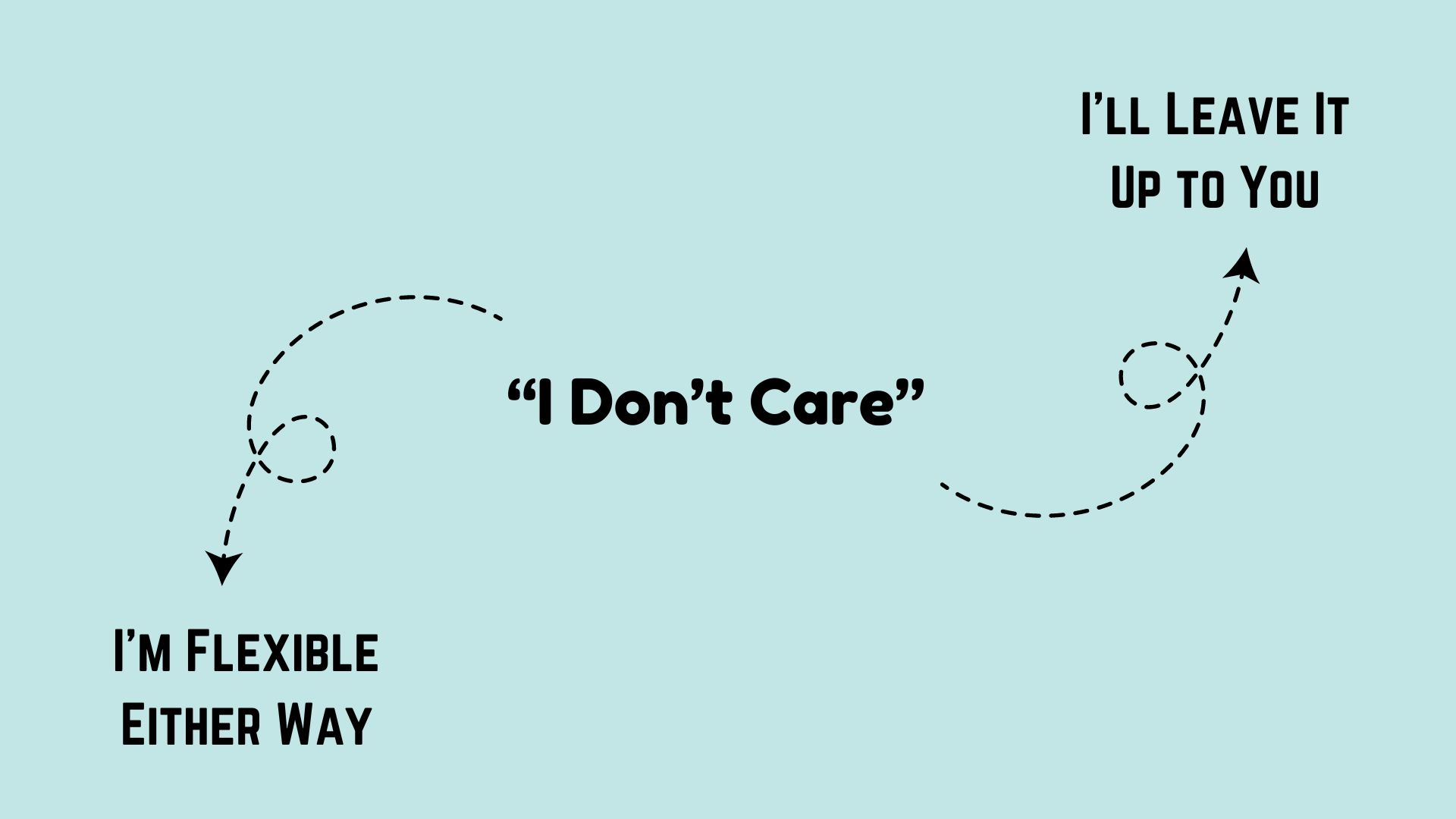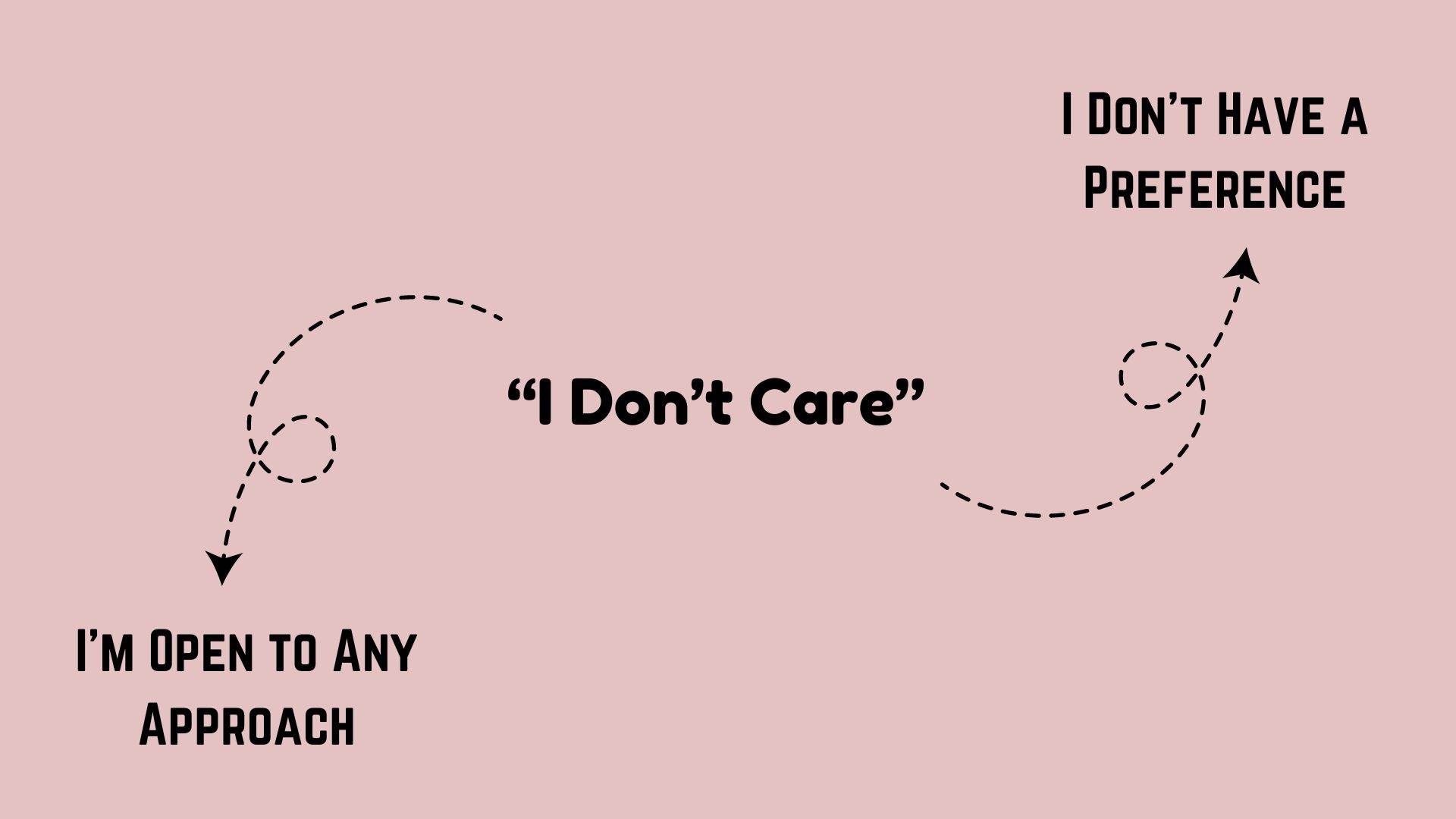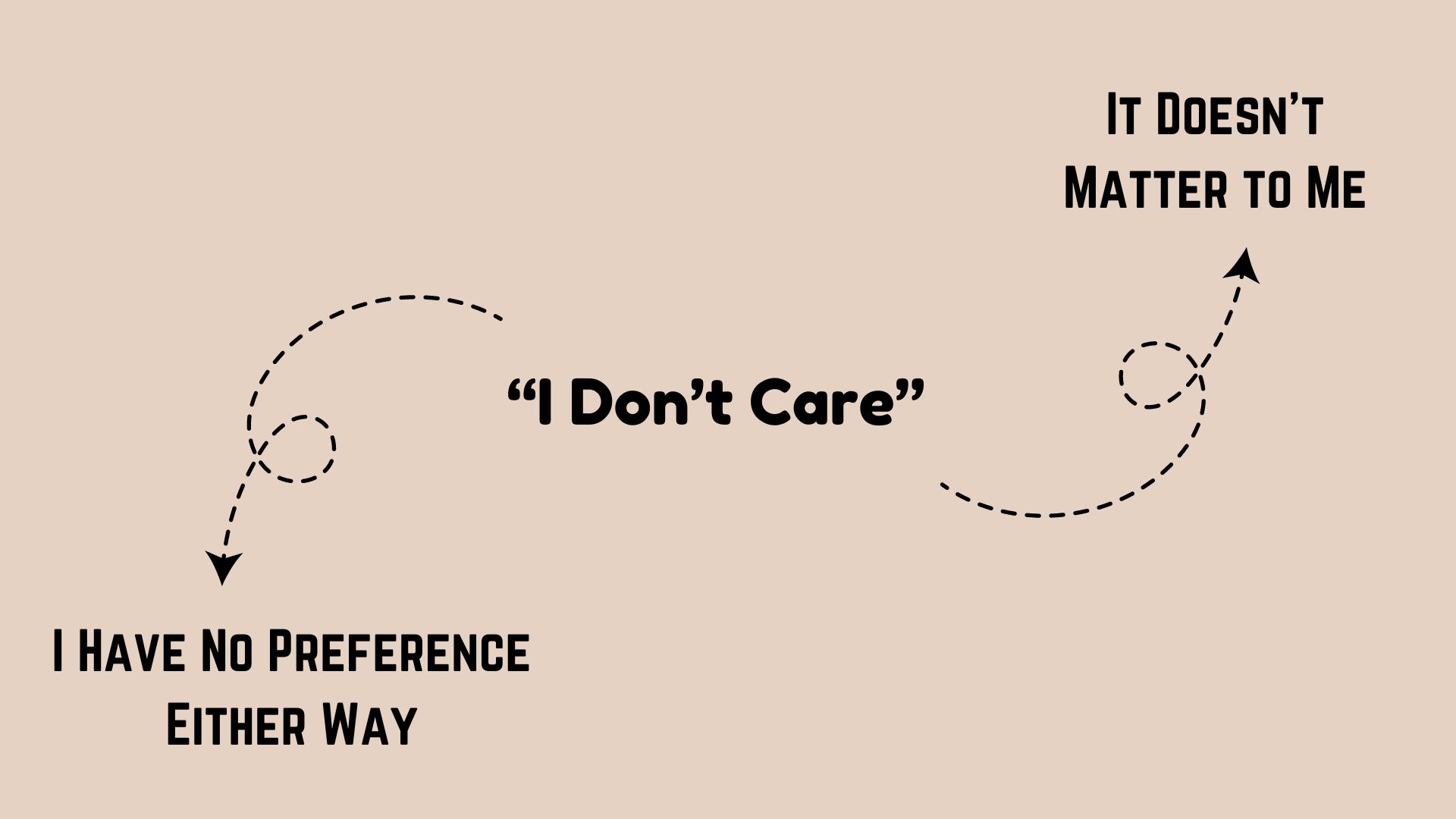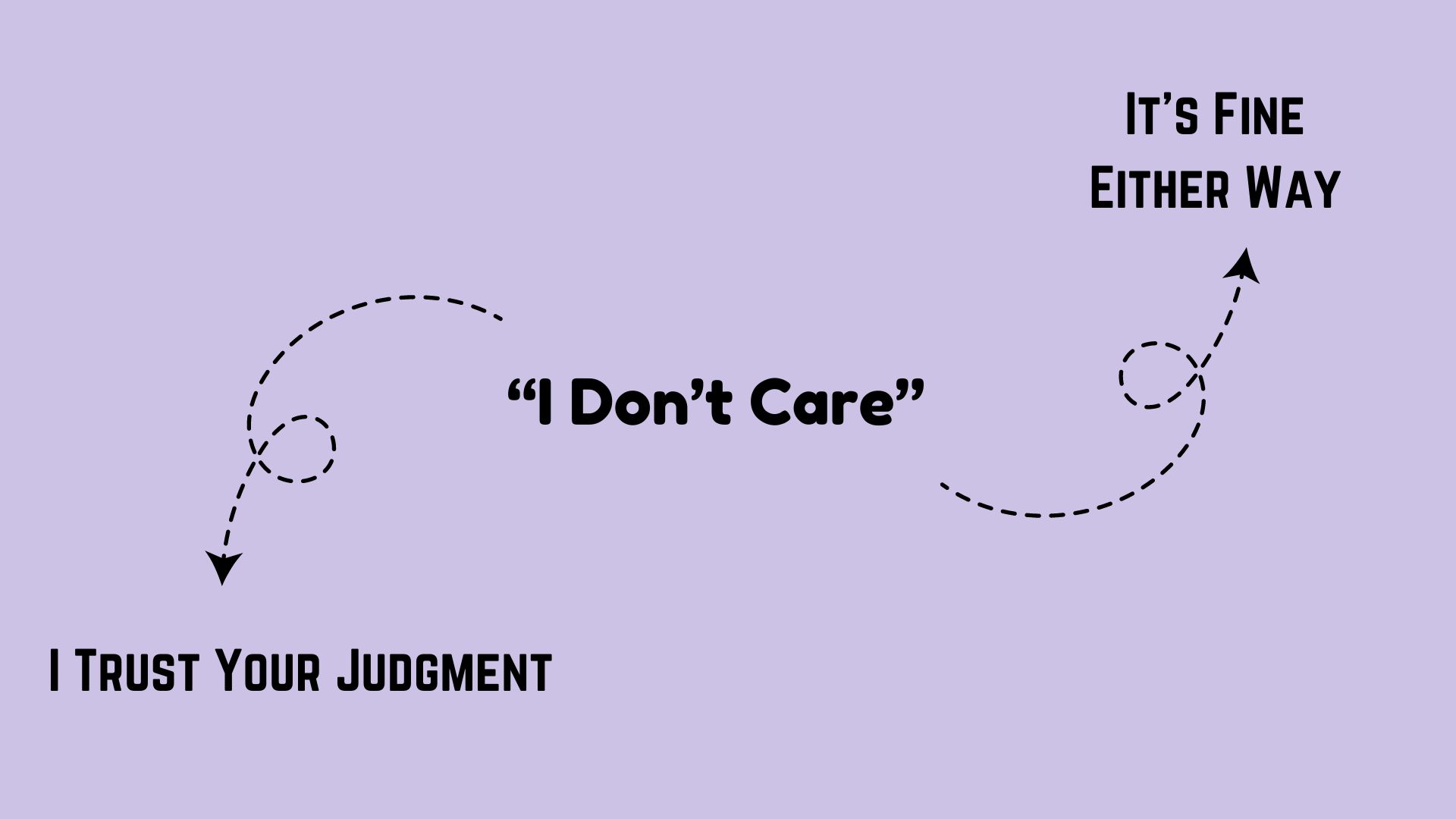In professional settings, it’s important to communicate that you’re indifferent or neutral about a decision or matter without sounding dismissive. Here are 23 ways to say “I don’t care” professionally, each with an example and specific use case to maintain a respectful tone.
1. I’m Flexible Either Way
Example: “I’m flexible either way regarding the meeting time.”
Use Case: When you’re open to any option being presented and have no preference.
2. I’ll Leave It Up to You
Example: “I’ll leave it up to you to decide which vendor to go with.”
Use Case: When delegating a decision and showing trust in the other person’s judgment.
3. I Have No Strong Preference
Example: “I have no strong preference on which design we choose.”
Use Case: When you’re comfortable with either option presented in a decision.
4. I’m Open to Whatever Works Best
Example: “I’m open to whatever works best for the team.”
Use Case: When showing you’re flexible and willing to go along with what benefits the group.
5. It’s All the Same to Me
Example: “It’s all the same to me whether we start the project this week or next.”
Use Case: When expressing that the timing or details don’t make a difference to you.

6. I’m Good with Either Option
Example: “I’m good with either option for the conference location.”
Use Case: When both options are acceptable, and you have no preference.
7. Whatever You Think Is Best
Example: “Whatever you think is best for the client presentation is fine with me.”
Use Case: When trusting the other person’s judgment and not needing to influence the decision.
8. I’m Okay with Any Outcome
Example: “I’m okay with any outcome as long as the project stays on track.”
Use Case: When the specific choice isn’t as important as the overall progress.
9. I Don’t Have a Preference
Example: “I don’t have a preference regarding the agenda for the meeting.”
Use Case: When expressing that the decision doesn’t impact you either way.
10. I’m Open to Any Approach
Example: “I’m open to any approach you suggest for the presentation.”
Use Case: When you’re fine with any method the other person chooses to use.

11. Either Option Works for Me
Example: “Either option works for me in terms of the project timeline.”
Use Case: When both choices are equally acceptable to you.
12. I’m Comfortable With Any Decision
Example: “I’m comfortable with any decision you make on this matter.”
Use Case: When you trust the decision-maker and are indifferent to the outcome.
13. It Doesn’t Matter to Me
Example: “It doesn’t matter to me which template we use for the report.”
Use Case: When you want to express indifference in a neutral way.
14. I’ll Go Along with Whatever You Decide
Example: “I’ll go along with whatever you decide for the team structure.”
Use Case: When showing you’ll support the decision regardless of what it is.
15. I Have No Preference Either Way
Example: “I have no preference either way regarding the format of the presentation.”
Use Case: When neither option affects you, and you want to express neutrality.

16. I’m Happy to Go with the Group’s Decision
Example: “I’m happy to go with the group’s decision on the project’s next steps.”
Use Case: When you’re open to following the majority opinion or team consensus.
17. I’m Fine With Any of the Choices
Example: “I’m fine with any of the choices for the venue.”
Use Case: When expressing that you’re okay with all presented options.
18. I’ll Support Whatever Direction We Take
Example: “I’ll support whatever direction we take for the client proposal.”
Use Case: When showing flexibility and a willingness to back the final decision.
19. I’m Indifferent to the Decision
Example: “I’m indifferent to the decision about which software to choose.”
Use Case: When the outcome doesn’t affect you, but you want to maintain professionalism.
20. I Trust Your Judgment
Example: “I trust your judgment on the color scheme for the presentation.”
Use Case: When allowing someone else to make a decision and showing confidence in their choice.

21. I Have No Input on This Matter
Example: “I have no input on this matter, so feel free to move forward.”
Use Case: When you don’t have any specific feedback or opinion to offer.
22. Whatever Suits the Team
Example: “Whatever suits the team best for scheduling is fine with me.”
Use Case: When expressing that you’re flexible and willing to follow the team’s decision.
23. It’s Fine Either Way
Example: “It’s fine either way whether we have the meeting in person or online.”
Use Case: When you don’t have a preference and want to convey that both options work.
Each of these phrases helps you express neutrality or indifference in a professional way, ensuring that you communicate effectively without sounding dismissive or uninterested.

